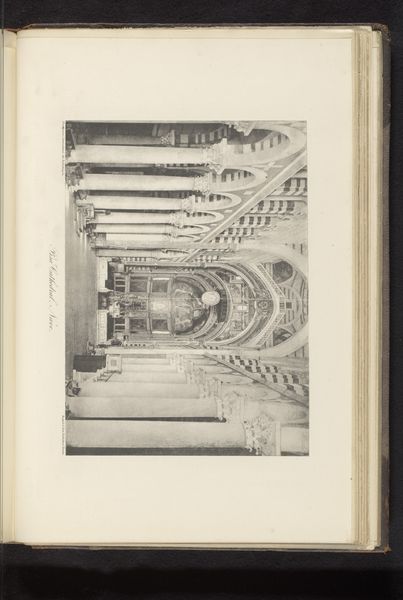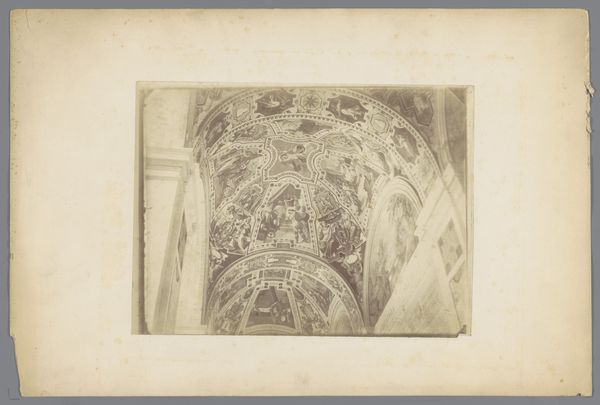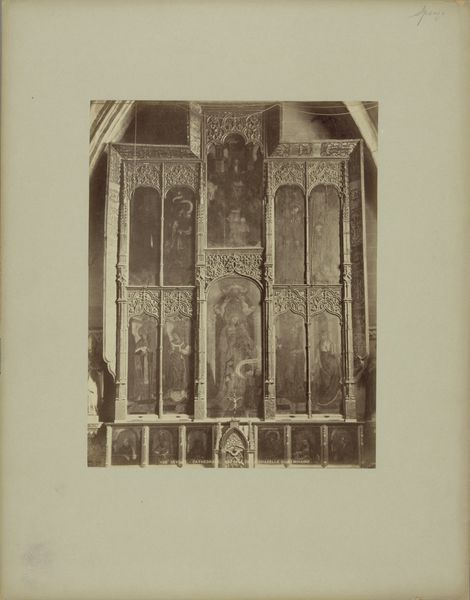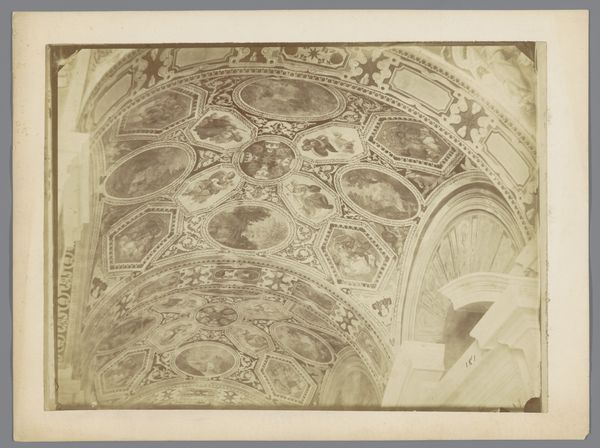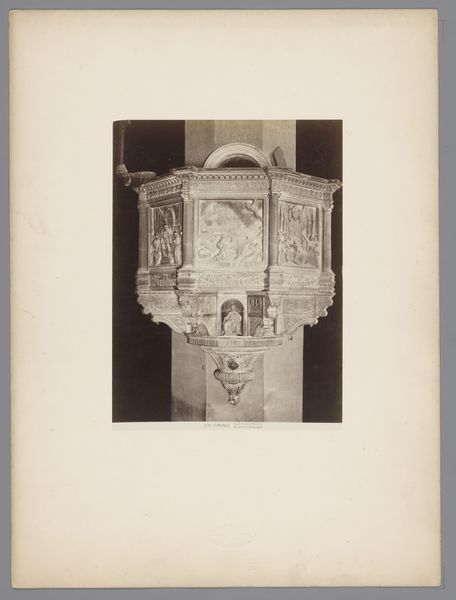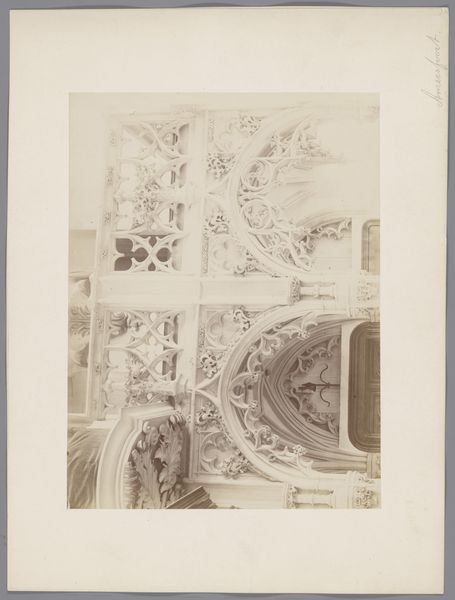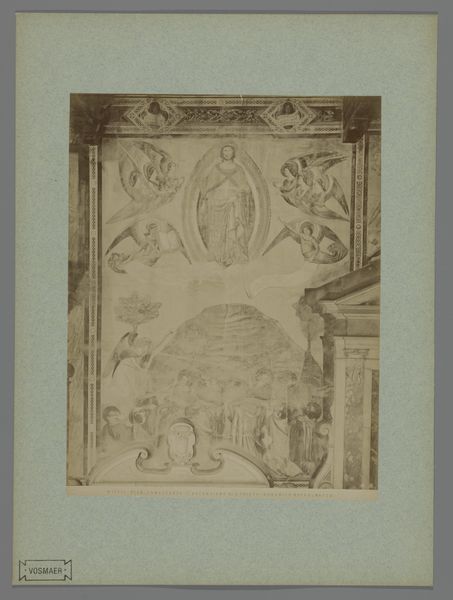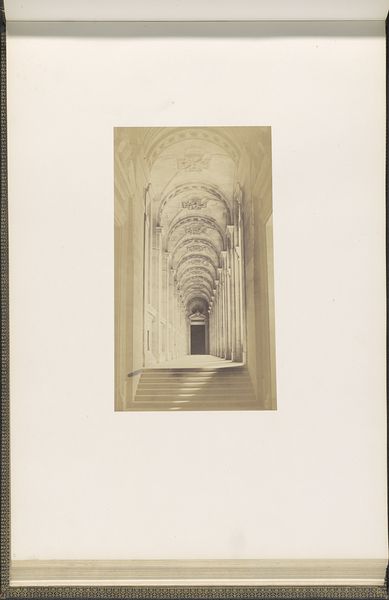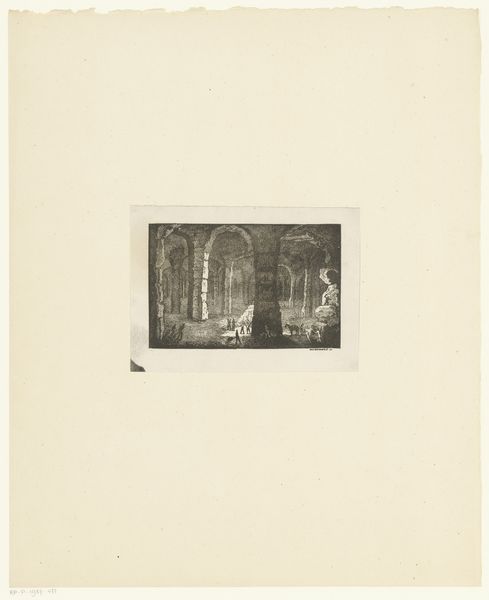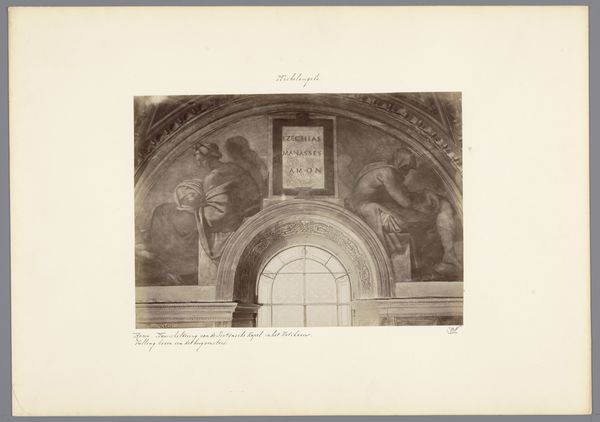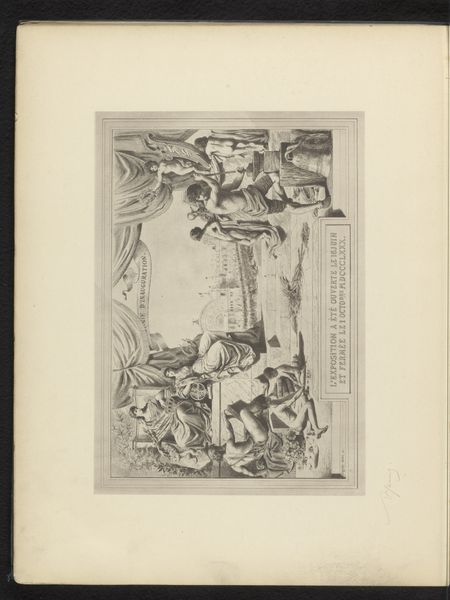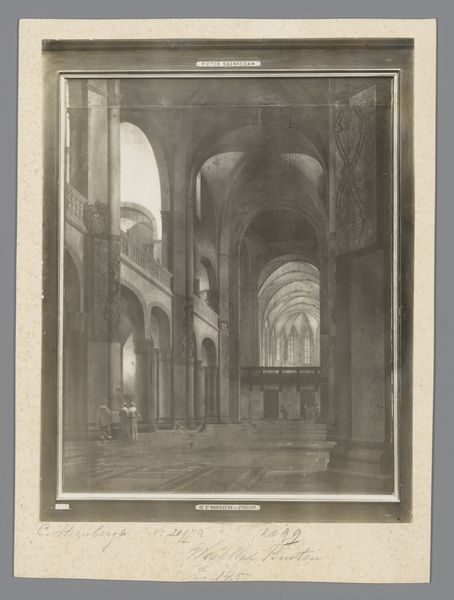
Dimensions: height 280 mm, width 204 mm
Copyright: Rijks Museum: Open Domain
Curator: Here we have an albumen silver print of a corridor inside the Vatican Museums, captured sometime between 1875 and 1900 by Gustave Eugène Chauffourier. What are your initial impressions? Editor: The way the photograph plays with perspective, emphasizing the long tunnel-like space of the corridor is amazing, it feels simultaneously infinite and incredibly claustrophobic. The soft sepia tones lend it a somewhat melancholic feel. Curator: It's fascinating to consider this photograph as a document of the burgeoning museum culture in the late 19th century. The Vatican Museums, already a major institution, were increasingly opened to a wider public, creating new ways of experiencing and consuming art and history. This photo captures that moment of transition. Editor: Absolutely. It is also intriguing how spaces of knowledge production were then - and often remain - inextricably linked to the Church. Consider that many treasures filling up this gallery represent artifacts looted and seized during imperialist projects around the globe. What are the ethics of holding and exhibiting these objects now? Curator: Those questions are at the forefront of museum practice today. As for the photograph itself, the perspective certainly draws the viewer in. Chauffourier skillfully uses the architecture to create a sense of depth. The high, elaborately decorated ceiling contrasts with the seemingly endless corridor, highlighting both the grandeur and the institutional nature of the Vatican. Editor: The photo’s architectural point of view feels like an attempt to portray an enduring, fixed notion of beauty and religious significance. I cannot help but reflect on who had access to this particular type of beauty, and what sort of propaganda those carefully placed frescoes played to reinforce societal and religious beliefs. Curator: An interesting interpretation, considering how photographs, back then, played a key role in disseminating images of famous artworks and places to a much wider audience. So it's more than just about power, it's about access too. Editor: You’re right, although it doesn't negate the social stratifications that shape that very accessibility and its reception by different social groups. Thank you for highlighting a new way for me to appreciate its artistic value as well as considering the political underpinnings of its creation. Curator: Thank you! This artwork certainly exemplifies that understanding the social context is paramount in appreciating visual art.
Comments
No comments
Be the first to comment and join the conversation on the ultimate creative platform.
